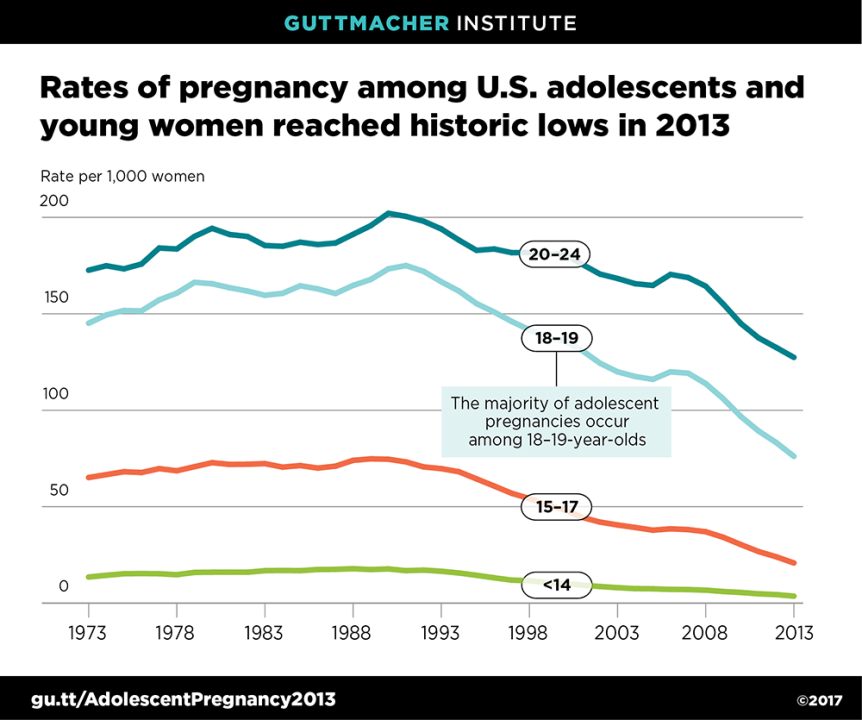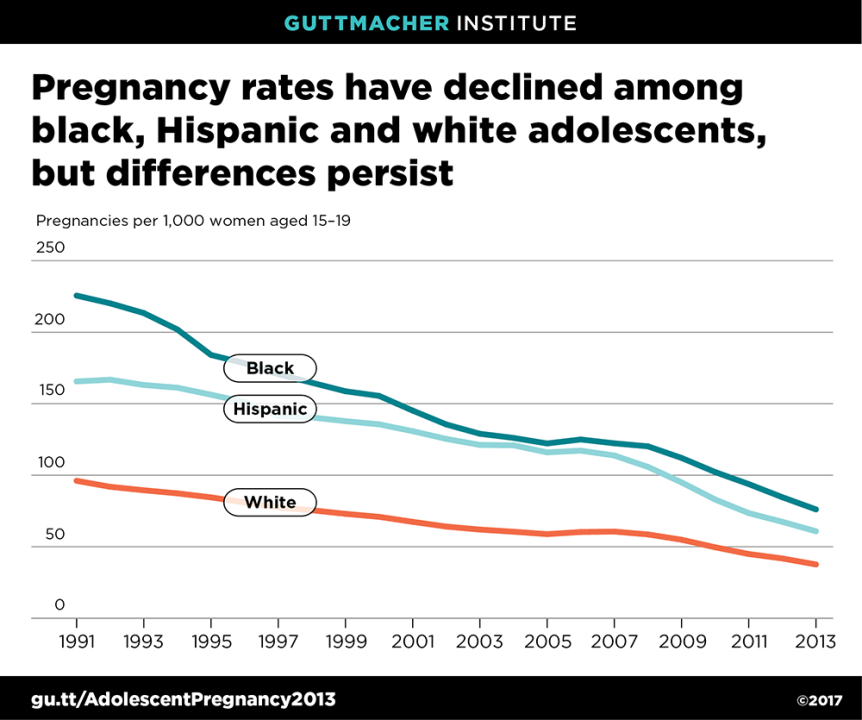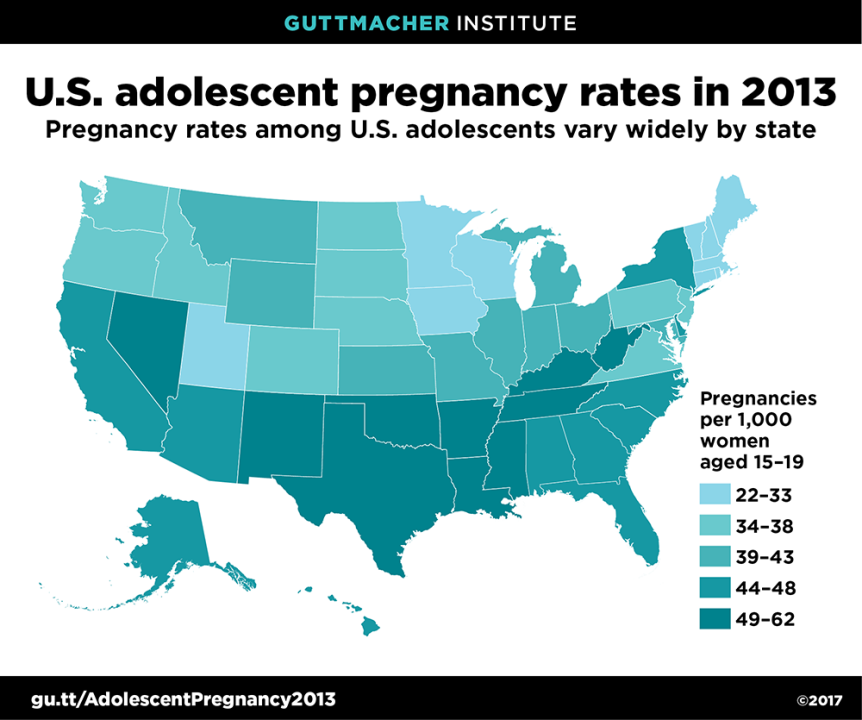Rates of adolescent pregnancy, birth and abortion in the United States continued to decline and reached historic lows in 2013, according to a new statistical report from the Guttmacher Institute. In 2013, about 448,000 women aged 15–19 became pregnant, for a national rate of 43 per 1,000 women in that age-group. This rate is about one-third of the peak adolescent pregnancy rate in 1990 and marks a 36% decline since 2008. In 2013, there were 26 births per 1,000 women aged 15–19 (down from 40 in 2008) and 11 abortions per 1,000 women in that age-group (down from 18 in 2008). The pregnancy rate among young women aged 20–24 also declined to a historic low in 2013, dropping to 127 pregnancies per 1,000 women in this age-group.
"These new estimates affirm that long-term declines in adolescent pregnancies, births and abortions have continued," says Kathryn Kost, lead author of the analysis. "The available evidence suggests that improved contraceptive use continues to be the primary driver of these declines."
As in previous years, adolescent pregnancies were concentrated among 18–19-year-olds: In 2013, they accounted for 72% of all pregnancies among young women aged 15–19. Adolescents aged 14 and younger had only 7,400 pregnancies, for a national rate of five per 1,000 among this age-group.
Although pregnancy, birth and abortion rates declined among all racial and ethnic groups, differences persist. In 2013, the pregnancy rate among black women aged 15–19 was two and a half times as high (76 per 1,000 women) as the rate among non-Hispanic white women (30 per 1,000), and the rate among Hispanic women aged 15–19 was twice as high (61 per 1,000). In the past decade, the pregnancy rate among young Hispanic women has declined more rapidly than among black women of the same age.
Pregnancy rates among 15–19-year-old women continued to decline in all 50 states between 2011 and 2013. Adolescent birthrates also decreased in every state, and abortion rates decreased in every state except Texas, which had no change between 2011 and 2013. However, rates of all measures varied widely between states, with rates generally higher in the South and Southwest.
For the first time, this report includes estimated state-level rates of unintended pregnancy among women younger than 20. In the 31 states with available data, unintended pregnancy rates ranged widely, from 16 to 41 per 1,000 women younger than 20. The proportion of pregnancies that were unintended also varied widely by state. A majority were unintended in every state, but substantial minorities of young women reported that they wanted to become pregnant or were unsure if they wanted to become pregnant at the time of the pregnancy. These new estimates reveal unexplored complexities of adolescent and young women’s experiences with pregnancy.
"Young women become pregnant in many different contexts," says Megan Donovan, Guttmacher policy expert. "Whether they seek to parent or not, it is critical that all young women are able to access the information, services and support they need to accomplish their reproductive goals."
Researchers analyzed birth data from the National Center for Health Statistics and abortion data from the Centers for Disease Control and Prevention and Guttmacher’s Abortion Provider Census to calculate the 2013 pregnancy rate among 15–19-year-old women. Population data are from the U.S. Census Bureau. For the first time, estimates of unintended pregnancy were calculated using state-level Pregnancy Risk Assessment Monitoring System surveys and Guttmacher’s Abortion Patient Survey. The Guttmacher Institute regularly updates adolescent pregnancy statistics as part of our ongoing surveillance of sexual and reproductive health in the United States.


